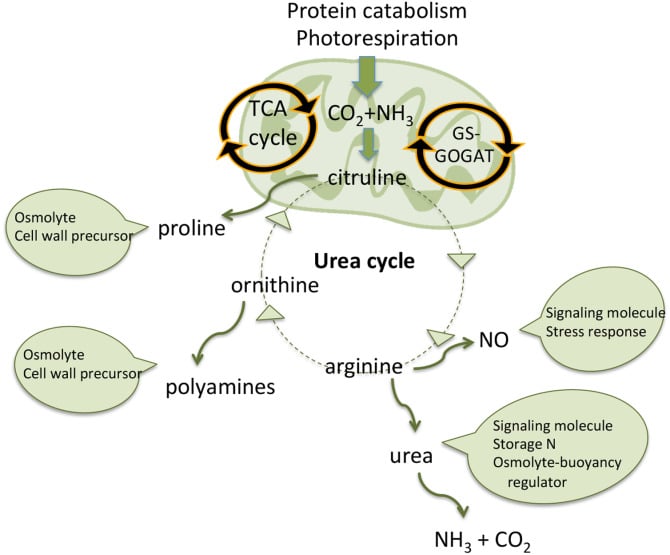Introduction
The human body is a marvel of biological engineering, with intricate systems working tirelessly to maintain balance and health. One such system is the urea cycle, also known as the ornithine cycle, which plays a vital role in eliminating toxic ammonia from the body. Understanding the urea cycle sheds light on how the body manages nitrogen metabolism and prevents the buildup of harmful substances.
What is the Urea Cycle?
The urea cycle is a series of biochemical reactions that occur primarily in the liver, although other organs such as the kidneys also contribute. Its primary function is to convert toxic ammonia, generated from the breakdown of proteins and amino acids, into urea, a much less toxic compound that can be safely excreted in urine.
Key Players in the Urea Cycle:
- Ammonia: Produced as a byproduct of protein metabolism, ammonia is highly toxic to cells and must be quickly removed from the body.
- Carbamoyl phosphate synthetase I (CPS I): This enzyme is responsible for the first step of the urea cycle, combining ammonia with bicarbonate and ATP to form carbamoyl phosphate.
- Ornithine transcarbamylase (OTC): OTC catalyzes the reaction between carbamoyl phosphate and ornithine to produce citrulline, effectively linking the urea cycle with the citric acid cycle.
- Argininosuccinate synthetase and argininosuccinate lyase: These enzymes facilitate the conversion of citrulline into argininosuccinate and then into arginine, respectively.
- Arginase: Arginase converts arginine into ornithine and urea, completing the urea cycle and producing urea for excretion.
Steps of the Urea Cycle:
- Ammonia enters the urea cycle through the formation of carbamoyl phosphate, catalyzed by CPS I.
- Carbamoyl phosphate combines with ornithine to form citrulline, a reaction facilitated by OTC.
- Citrulline is transported out of the mitochondria into the cytosol, where it reacts with aspartate to form argininosuccinate, catalyzed by argininosuccinate synthetase.
- Argininosuccinate is then cleaved by argininosuccinate lyase to produce arginine and fumarate.
- Arginine is hydrolyzed by arginase to yield urea and ornithine, which can re-enter the cycle to facilitate further urea synthesis.
Regulation of the Urea Cycle
The urea cycle is tightly regulated to ensure efficient removal of ammonia while preventing the depletion of key intermediates. Factors such as dietary protein intake, hormonal regulation, and the metabolic state of the body influence the activity of urea cycle enzymes.
Clinical Relevance
Disruption of the urea cycle can lead to hyperammonemia, a condition characterized by elevated levels of ammonia in the blood. Inherited deficiencies in urea cycle enzymes can result in various disorders, such as ornithine transcarbamylase deficiency (OTC), argininosuccinate synthetase deficiency, and arginase deficiency, which can manifest in neurological symptoms, developmental delays, and even life-threatening complications if left untreated.
Conclusion
The urea cycle exemplifies the body’s remarkable ability to maintain homeostasis and eliminate waste products. By converting toxic ammonia into urea, the urea cycle plays a crucial role in preventing cellular damage and ensuring overall health. Continued research into the regulation and function of the urea cycle not only enhances our understanding of basic biochemistry but also holds promise for the development of novel therapeutic approaches for urea cycle disorders and related conditions.


